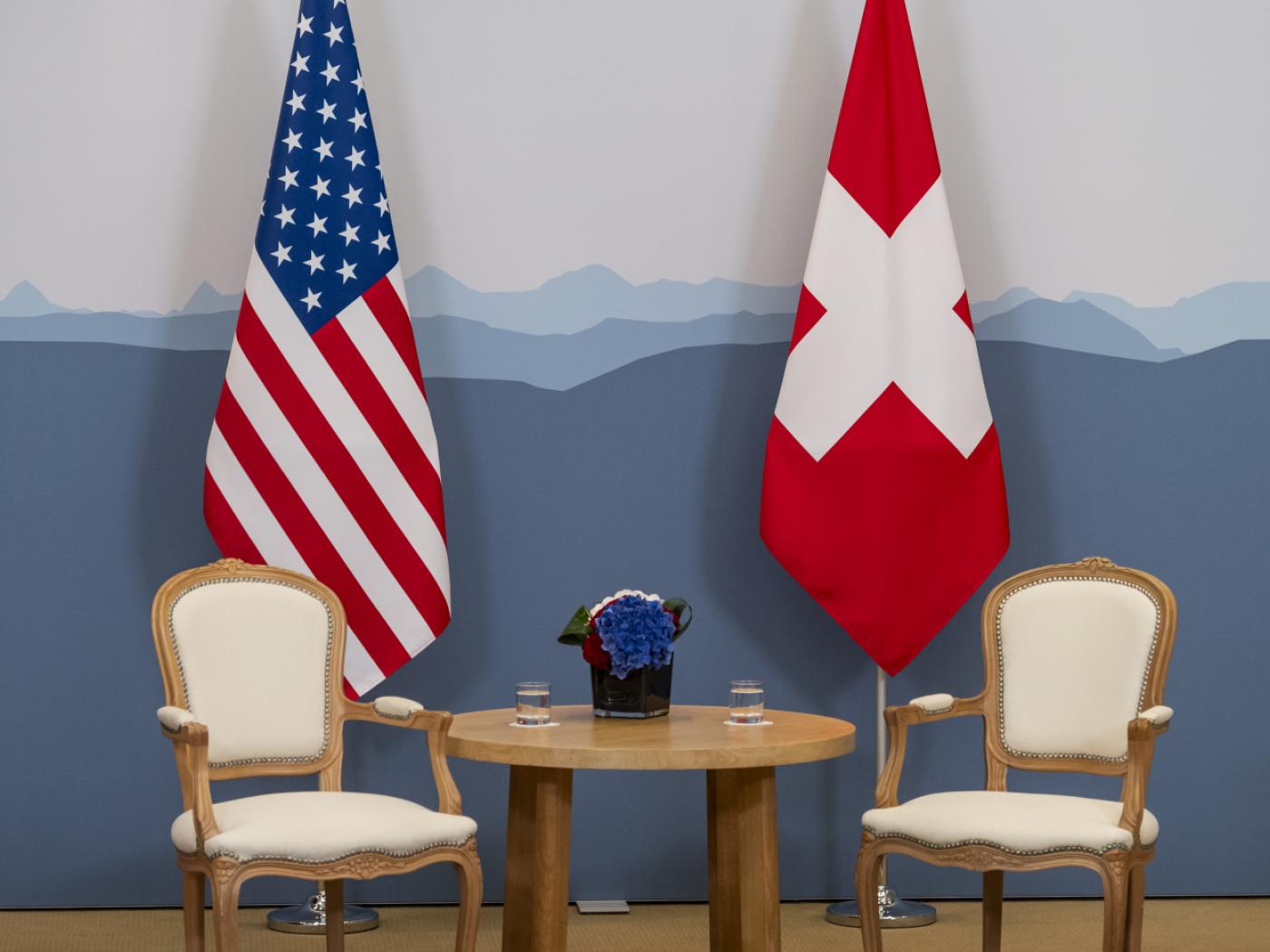[This article is adapted from Murray Rothbard’s 1977 keynote address to the Libertarian Party.]
I used to think that adopting the victory of liberty as the overriding goal must be almost self-evident to all libertarians — until I began to find those who turned pale and fled when the word “victory” was mentioned. For there are all too many libertarians who apparently believe that the point of the whole enterprise is not triumph in the real world, but all sorts of other motivations, ranging from contemplating the beautiful intellectual edifice of the libertarian system to selling each other dried beans to bearing moral witness to the rightness or righteousness of the libertarian worldview.
There is, I suppose, a certain satisfaction in knowing, or even proclaiming, that we are right and that everybody else is wrong and misguided. But, in the long run, this and the other motivations are only frivolous; they are simply not worthy of respect. They are not worthy of being mentioned in the same breath as the American revolutionaries who pledged their lives, their fortunes, and their sacred honor to the cause.
The major serious objection to holding victory as our goal is that such a goal can only be hopeless and absurd. The state, it is said, is mighty, pervasive, and all-powerful; and who are we but a tiny handful of men and women, dwarfed by the legions of the state? But this sort of thinking is impressionistic and superficial; geared to the range of the present moment, it overlooks the underlying trends of historical events.
Here, in particular, we can take hope and inspiration from the Founding Fathers and the American Revolution. For, I can assure you, to the observers of that day, the American cause looked totally hopeless. How could a handful of ragged, untrained soldiers hope to defeat the mightiest state, the mightiest Empire of the eighteenth century? To all knowledgeable people, the American cause seemed hopelessly quixotic and absurd, Utopian and unrealistic. For, think of it: In all of history there had never been a successful mass revolution from below against a strong ruling state. So how could this American rabble possibly succeed? And yet — we did it! We won! We performed the impossible.
The first libertarian revolution succeeded, and we can do the same — but we, too, must have the will to triumph, to accept nothing less than total victory.
Of course, in the immediate present, any existing state may look all-powerful, while opposition movements may seem small and puny. But, in a few short years, how the tables may be turned! State after state has seemed all-powerful almost to the day of its collapse and demise, while numerous successful ideological movements have flowered from a tiny handful to triumph a few short years later.
And no state has seemed more powerful than did the British Empire at the start of the American revolutionary war. It was easy to look superficially at the first two years of that war and conclude that all was inevitably lost. Washington’s Continental Army had almost been wiped out in New York; Howe’s army had conquered the American capital at Philadelphia. Washington’s forces froze and starved through the winter at Valley Forge and St. Leger and Burgoyne were marching down from Canada to meet at Albany and then proceed to New York City and cut America in two.
As everyone knows, the turning point of the war came in late 1777, when Gentleman Johnny Burgoyne’s once mighty British army was surrounded and forced to surrender at Saratoga. But what were the factors that brought about this fateful turn and that carried the Americans through the rest of the lengthy conflict to victory?
There are many causal facts that we could mention, including the overweening self-confidence of the British, who contemptuously dismissed Americans as a militarily untrained rabble; there is also the determination and dedication of the Americans, civilian and military. But what I would like to concentrate on here is the fact that the American revolutionary leaders adopted and developed what would nowadays be called a “mass line.” That is, in contrast to conservatives, whether of 1777 or 1977, the American revolutionaries were not afraid of the mass of the American public. On the contrary, they realized that the great bulk of Americans were being oppressed by the British, and that the public could be brought to see this and to act upon that knowledge.
And sure enough, the great strength of the American armed forces is that they relied upon, indeed blended with, the civilian population. In a deep sense they were that population. The Americans were a people in arms, a mobile people that knew their particular terrain, and who were imbued with a deep sense of their rights and of the iniquity of the British invasion of those rights. When combating Burgoyne, the Americans, led by British-born libertarian General Horatio Gates, shrewdly avoided, until the very end at Saratoga, direct confrontation with the superior firepower of the highly trained British invasion force.
Instead, Gates, aided by influxes of armed civilians who joined the fray as their own counties and districts were being invaded, wore down the British forces by guerrilla harassment. An example particularly heart-warming to libertarians, is the case of General John Stark, who had resigned from the American army and retired to his native New Hampshire in pique at shabby treatment by his superiors. But when a troop sent out by Burgoyne invaded southwestern Vermont, Stark rose up, mobilized the militia and other volunteers from New Hampshire and Vermont, and clobbered the British troops at the Battle of Bennington.
Gates and Stark, and later the victor of the decisive final Southern campaign, General Nathaniel Greene, were following the theories and the vision of their mentor, the forgotten and unsung hero of the revolutionary war, General Charles Lee, second in command of the American army during the first years of the war.
Lee was a fascinating character, an English military genius and soldier of fortune and a radical laissez-faire libertarian, who, as soon as he heard of the events leading up to the Boston Tea Party and the developing break with his native country, rushed to America to take part in the revolution. It was Lee who fused the political and the military together to develop the principles, strategies, and tactics of revolutionary guerrilla warfare, which he called “people’s war.” Every American military victory in the war was fought on people’s war, guerrilla principles; every defeat was suffered when America tried to play the age-old game of inter-state warfare between two disciplined state armies marching to meet each other in open frontal combat.
Thus, Lee and his disciples worked out and applied the military implications of a mass line, of a people rising up against the Leviathan state.
There were other vitally important features of this overall mass line. One of its important aspects was that the American revolutionaries blended all the arguments against British imperialism into a harmonious and integrated structure. Historians have argued whether the revolution’s thrust was economic, constitutional, moral, religious, political, or philosophic — without realizing that the revolutionaries’ libertarian perspective integrated them all. No vital aspect went neglected. The revolutionaries understood — and pointed out — that the British government was injuring the economic well-being of the Americans through taxes, regulations, and privileged monopolies; but they also knew that, in so doing, the British were aggressing against the natural rights of person and property enjoyed by Americans and by all men. For the American revolutionaries, there was no split, no disjunction, between the economic and the moral, between prosperity and rights.
As a corollary to their mass line, the American revolutionaries and their leaders were not afraid to be radical. In current rhetoric, they dared to struggle and dared to win. There were three features of that radicalism that I would like to explore today. First was their willingness, indeed their eagerness, to desanctify, to demythologize the state, to strip it of its ancient encrusted armor of justifications, alibis, and rationalizations. The last and vital remaining act of this process was desanctifying the king — a revered mystical symbol of state sovereignty which was far more powerful, to Americans and to Britons, than Parliament or the unwritten British constitution.
This final act was necessary to any outright American break for independence; it was first launched tentatively, very early in the revolutionary agitation, by Patrick Henry, but the mortal blow was delivered by the unknown, impecunious pamphleteer Tom Paine, another English-born laissez-faire radical who performed this feat in his runaway best-seller, Common Sense. Paine realized that this final act of demystification had to be couched radically, in no mincing or uncertain terms, thus cutting the final umbilical cord not only with Great Britain, but also with the age-old established principle of monarchy. And in so doing Paine also pointed out the piratic origins of the state itself. He referred to King George as “the royal brute of England,” and to kings in general as “crowned ruffians,” whose thrones had all been established by being heads of gangs of “armed banditti.”
The king, he wrote, was “nothing better than the principal ruffian of some restless gang; whose savage manners or preeminence in subtlety obtained him the title of chief among plunderers; and who by increasing in power and extending his depredations, overawed the quiet and defenseless…”
Paine concluded his great work with these stirring words:
“O! Ye that love mankind! Ye that dare oppose not only tyranny but the tyrant, stand forth! Every spot of the old world is overrun with oppression. Freedom hath been hunted around the globe. Asia and Africa have long expelled her. Europe regards her as a stranger, and England hath given her warning to depart. O! receive the fugitive, and prepare in time an asylum for mankind.”
I would like to underscore the importance of the line, “Ye that dare oppose not only tyranny but the tyrant…” For here Paine was referring to that two-step, double “baptism” process of which I spoke earlier. That it is splendid, but not enough, to come to the point of opposing tyranny in the abstract, as a general principle; but that it is of equally vital importance to press on to the second stage, to the concrete activism of engaging in struggle against the actual tyrant of whatever time and place we happen to live in.
This brings me to the second, interconnecting radicalism of the first libertarian revolution. It used to be thought that all Americans had read John Locke and were simply engaged in applying his concept of natural rights, of rights to liberty and property, and right of revolution against tyranny. But now we know that the process was not that simple. Even in those enlightened days not everyone was interested in or equipped to read abstract philosophy.
What most Americans did read were intellectuals and libertarians, like Tom Paine, who took Locke’s abstract philosophy and radicalized it to apply to the conditions of their time. By far the most influential such writings throughout the eighteenth century were “Cato’s Letters,” written by two libertarian English journalists, John Trenchard and Thomas Gordon. Trenchard and Gordon not only put Locke’s ideas into stirring and hard-hitting phrases; they took Locke’s “if … then” proposition: that is, if the government transgresses against rights of person and property, then it is proper to rebel against it, and added in effect this insight: “The if is always here.” In other words, they pointed out that it is the essence of power, of government, to expand beyond its laissez-faire limits, that it is always conspiring and attempting to do so, and therefore that it is the task of the people to guard eternally against this process. That they must always regard their government with hostility and deep suspicion: in short, with what is now disparagingly called, “a conspiracy theory of history.”
And so, when the British government, after the war with France was over in 1763, began their grand design to reduce the virtually independent American colonies to imperial subjection, the American colonists, without access to the memoranda and archives of the British government of the day, suspected the worst, and immediately roused themselves to determined resistance. Now, two hundred years later, we know that the colonists’ suspicions were correct; they could not know this, but they were armed with a “conspiracy theory” which always suspects governments of designs upon liberty. They had absorbed the lesson of Trenchard and Gordon in Cato’s Letters:
“We know, by infinite examples and experience, that men possessed of Power, rather than part with it, will do anything, even the worst and the blackest, to keep it [pace Richard Nixon]; and scarce ever any man upon earth went out of it as long as he could carry everything his own way in it… This seems certain, that the good of the world, or of their people, was not one of their motives either for continuing in Power, or for quitting it.
It is the nature of Power to be ever encroaching, and converting every extraordinary Power, granted at particular times … into an ordinary power, to be used at all times….
Alas! Power encroaches daily upon Liberty, with a success too evident… Tyranny has engrossed almost the whole earth, and striking at mankind root and branch, makes the world a slaughterhouse….”
There is another critical point to make about the importance of such men, such best-sellers as Trenchard and Gordon or Tom Paine. At the last LP national convention in Washington, a friendly journalist, and many others, remarked that it seemed more like a scholars’ conference than a political party gathering. And one participant reported that everyone there seemed to be very smart, but if that’s the case, how in the world will we ever win the masses of the non-smart?
Well, the first answer is that yes, we are very different from other political party conventions. I don’t think that the crucial difference is that we’re smart and the others are dumb; after all, if we may let this secret out to the world, we’re not all that smart! We are a glorious movement to be sure, but we have hardly achieved perfection. The difference between us and the Democrats and Republicans is not that we are so much smarter than they are, but that we are deeply concerned with ideas, with principles, whereas they are simply concerned with getting their places at the public trough. We are interested in principles, they in power; and, gloriously enough, our principle is that their power be dismantled.
But how can the masses understand ideas? Well, a quick answer is that they have done so before: notably in the American Revolution and for a hundred or so years afterwards: in America and in Europe. So if they didn’t read Locke, they read Paine or Cato or their popularizers, or read their followers in the press or heard them in speeches and sermons.
The American revolutionary movement was a diverse and structured one, with different persons and institutions specializing in various aspects of the struggle. The same is and will be true of our movement. Just as not everyone had to read Locke to become a full-fledged American revolutionary, not everyone now has to read all of our flowering theoretical works in order to grasp the essence of libertarianism and to act upon it.
The American revolutionaries never felt that every American had to grasp fully the fifth lemma of the third syllogism of the second chapter of Locke before they could take their place in the developing struggle; and the same should be true of our libertarians and our own theoretical works. Naturally, the more that everyone reads and understands the better; and it is hardly my point to deprecate the great importance of theory or of reading. My point is that not everyone has to know and agree to every nuance before we start moving, ingathering, and acting to transform the real world.
There is a third important aspect of the radicalism of the American revolutionaries, and this again underscores the importance of the mass line. In contrast to their polar enemies, the conservatives, who strove to maintain traditional aristocratic and monarchical rule over the masses, the libertarian revolutionary leaders realized that the masses, as well as themselves, were the victims of the state, and hence they only needed to be educated and aroused to join the radical libertarian cause.
The conservatives knew full well that they were subsisting on privileges coerced from a deluded and oppressed public through their control of state power; hence they apprehended that the masses were their mortal enemy. The laissez-faire radicals, for their part, understood that same fact, and so from the revolution down through most of the nineteenth century, here, in Great Britain, and on the continent of Europe, these libertarians led the mass of the public against traditional conservative statism. Where the conservatives rested their case on traditional privileges sanctified by mystical divine command, the laissez-faire radicals held aloft the banner of reason and individual rights for all people.
Here again is a profound lesson for us today. Too many libertarians have absorbed the negative and elitist conservative worldview to the effect that our enemy today is the poor, who are robbing the rich; the blacks, who are robbing the whites; or the masses, who are robbing heroes and businessmen. In fact, it is the state that is robbing all classes, rich and poor, black and white, worker and businessman alike; it is the state that is ripping us all off; it is the state that is the common enemy of mankind. And who is the state? It is any group who manages to seize control of the state’s coercive machinery of theft and privilege. Of course these ruling groups have differed in composition through history, from kings and nobles to privileged merchants to Communist parties to the Trilateral Commission. But whoever they are, they can only be a small minority of the population, ruling and robbing the rest of us for their power and wealth. And since they are a small minority, the state rulers can only be kept in power by deluding us about the wisdom or necessity of their rule.
Hence, it is our major task to oppose and desanctify their entrenched rule, in the same spirit that the first libertarian revolutionaries opposed and desanctified their rulers two hundred years ago. We must strip the mystical veil of sanctity from our rulers just as Tom Paine stripped the sanctity from King George III. And in this task we libertarians are not the spokesmen for any ethnic or economic class; we are the spokesmen for all classes, for all of the public; we strive to see all of these groups united, hand-in-hand, in opposition to the plundering and privileged minority that constitutes the rulers of the state.
Watch our new documentary, Playing with Fire!
Full story here Are you the author? Previous post See more for Next postTags: Featured,newsletter




























